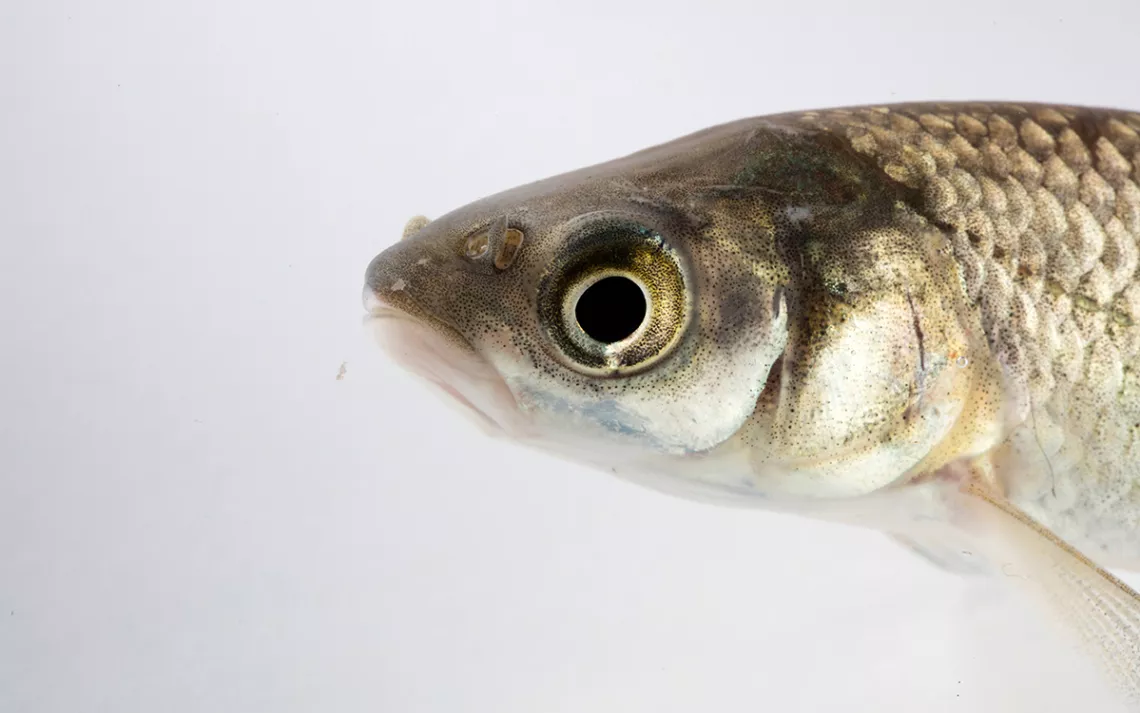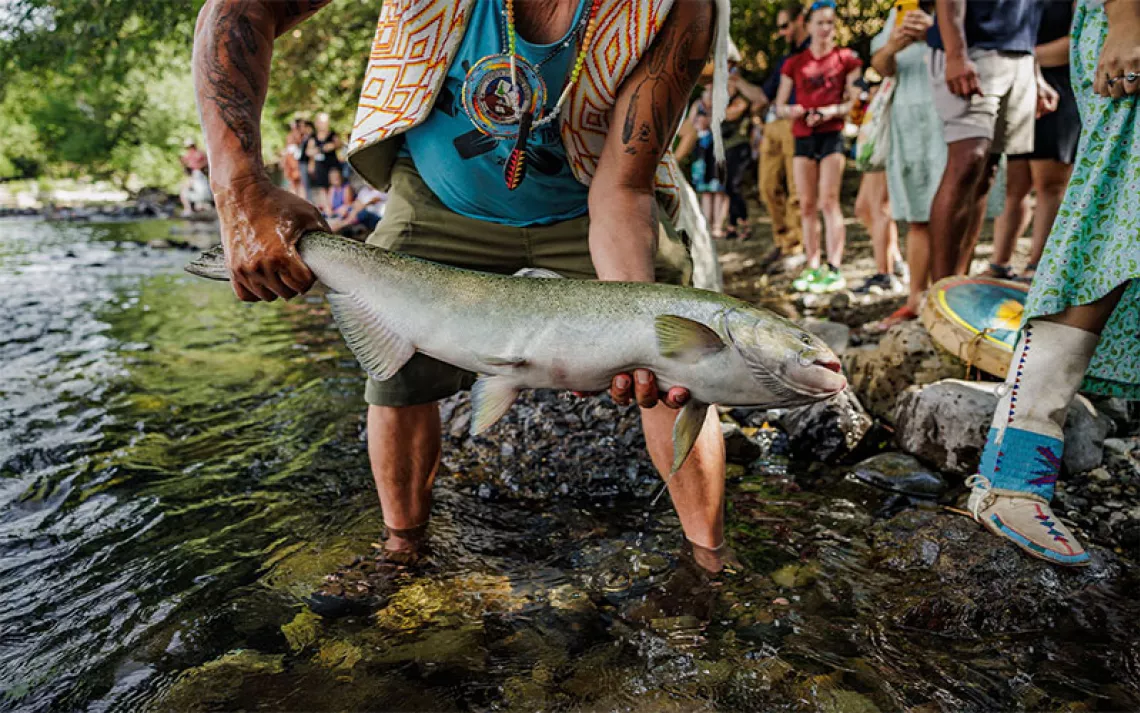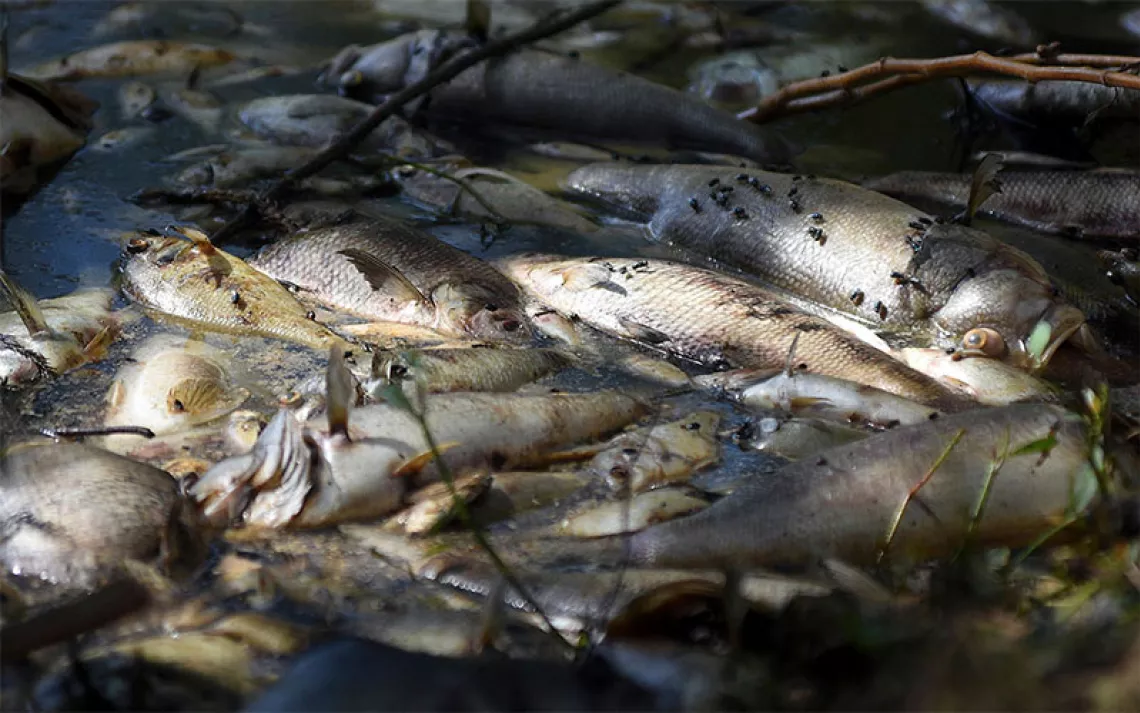Can You Eat Asian Carp? Yes. And You Should.
We spend millions trying to eradicate Asian carp, but they're also delicious
Nearly a decade ago, John Crilly, a psychiatrist and academic living in New Orleans, read an article that changed his life. It was about a local chef who had begun cooking one of the most reviled species in America—silver carp, commonly known as Asian carp.
The presence of silver carp in the Mississippi dates back to the 1960s, when scientists in Arkansas brought a few different species of Asian carp into the country to see if they might offer a chemical-free way to clean algae out of fish ponds. When funding for the experiment dried up, the fish were released to the waterways and swiftly began outcompeting local fish. Today Asian carp—mostly bighead, silver, and grass carp—make up 90 percent of the biomass in parts of the Ohio and Mississippi rivers.
In China, Asian carp have been farmed and eaten for over a thousand years, and a certain kind of entrepreneur saw the spread of the Asian carp as an opportunity. In the 2010s, a burst of carp-focused fish processors sprouted along the Mississippi River system—often accompanied by breathless press coverage about their potential economic impact.
Crilly, though, wasn’t just thinking economic impact. He and another academic, an endocrinologist named Lanchi Luu, did their fieldwork in rural Louisiana. As a way of giving back, they had started a nonprofit, the Community Empowerment Services Agency, that sought to improve economic opportunities for some of the populations they worked with, like immigrant shrimpers. Processing carp seemed like a good source of work. Neither of them had any food industry experience—nor any experience fishing—but together they set out to learn the business.
They soon hit up against the same challenge that has bedeviled other carp-focused businesses: these fish have a series of Y-shaped bones running through their middle, which makes them notoriously difficult to process into the kind of products that Americans are used to eating, like fish sticks, fish patties, and boneless fillets. Crilly and Luu hand-cut thousands of carp, looking for the optimal technique for harvesting boneless fillets. They named the new business FIn Gourmet, short for “Fish Innovation.”
***
The next step was finding a buyer. The most obvious market was overseas. Many of the fish processing plants handling Asian carp were Chinese-owned. They treated carp as a simple commodity: catch it, fillet it, freeze it, send it out. Luu and Crilly followed a similar business model; they outbid a rival company and won a contract to ship carp to the Dominican Republic. But they struggled to make a profit. “The margins, it turned out, were so small,” Luu said. They were advised to try other undiscerning markets: prison systems, maybe, or emergency food kits.
Instead, they decided to create high-value products that could be priced accordingly. “This is a tremendous fish,” Crilly said. Carp have an abundance of healthy Omega-3 fatty acids, and because they are vegetarians, they have lower levels of toxins, like mercury, that accumulate in species that eat higher on the food chain.
Their boneless carp fillets, the results of those long fish-chopping sessions, have since been served everywhere from the James Beard House in New York City to the White House. Fillets, though, make up a small portion of FIn’s profit. Their biggest sellers are products made from surimi, a minced fish paste that is a staple ingredient in many parts of Asia. Luu began using surimi to make Vietnamese-style fish cakes and hit on an unusual distribution site: nail salons, where many Vietnamese staff were hungry for healthy, familiar food. FIn began distributing through Asian grocers in Atlanta, selling fish scraps to high-end pet food manufacturers, and manufacturing its own pet treats.
This approach proved to be key. A four-pound fish might cost the company $5, says Luu. If it is sold whole, or processed only for filets, the profit would be around 40 cents per fish. Developing a diverse product line meant that the entire fish could be sold in one form or another and could bring in more than $50.
Their enthusiasm for carp processing quickly eclipsed their passion for academia. As researchers, Luu said, they were “always taking information, and never giving back.” It felt very different to be creating jobs, and selling healthy and sustainable food.
Crilly and Luu moved to the small town of Paducah, Kentucky, in order to be closer to a steady supply of fish and fishermen, and opened a processing facility in a former barbecue shack The Freight House, Paducah’s sole farm-to-table restaurant has served “Kentucky Silver Carp” since the day it opened in 2015. “Once anybody tries it, they are completely changed,” says chef Sara Bradley. “The trick is just to get them to eat it.”
***
When I visited the processing plant recently, FIn’s team of processors talked and laughed as they filleted the day’s catch and scraped carcasses clean. Buckets of fish guts stood in the corners. I asked Jessica Pastor-Perez, FIn’s general manager, if her evident satisfaction in her job came from knowing she was solving an ecological problem.
More meaningful than that, she said, was the fact that the crew were all second-chance employees. Crilly and Luu make it a practice to reach out to drug court and rehab programs so that they can hire workers who might otherwise struggle to find employment. Pastor-Perez knows from experience, as someone with a criminal record, just how much a solid job can mean. “I have a college degree,” she said. “Finding a job where I can utilize that in this small town was hard.”
The crew can work through 4,000 pounds of fish in a day, if necessary. That makes the company small compared to others in the business: Schafer Fisheries has been selling carp since 2006 out of a small river town in northern Illinois, and reports sales of 10 to 15 million pounds per year—most of which is shipped to China. Two Rivers Fisheries, based out of Wickliffe, Kentucky, will sell more than 3 million pounds this year, according to operations manager Jeff Smith. Next year, Smith is forecasting sales of 8 million pounds. Two Rivers focuses not on value-added products, but whole raw fish, processed in various combinations: headed, scaled, gutted. Around half of their product goes overseas, to 11 different countries.
Smith noted the high cost of those shipments—often 25 cents per pound. But selling domestically is difficult, too, he said. “The problem with the American market is they do not want to deal with getting the bones out of it.”
***
One of the biggest challenges for Fin, Schafer, and Two Rivers is finding enough fishermen. Commercial river fishing is a dwindling industry along many parts of the Mississippi and Ohio, and I understood at least one reason why, after joining a fisherman on a Mississippi lake on a frigid December morning. Much of the morning was spent simply untangling carp, buffalo, and catfish from gill nets. The winds were harsh, and when the fish landed in the metal-bottomed boat, they sent up blood and slime and cold river water.
Two Rivers offers flashy bonuses to fishermen who sell to them regularly—like a Ford F150 pick-up truck. Crilly and Lu have their own strategy: the more fish someone brings in, they higher per pound cost they are willing to pay. FIn pays more than anyone else for carp, says Crilly, but their standards are exacting—the fish must be large, iced, and well-cared for.
Some companies expect fishermen to deliver their own catch. Crilly sees this mentality as a bad fit for a rural industry that is just getting off the ground. Instead, he spends a lot of time on the road, picking up the day’s catch, and driving it back to Kentucky. “We do whatever it takes to get the fish,” he said. As the market for Asian carp expands, FIn plans to pay more—producing a kind of feedback loop that helps everyone.
None of this has stopped the federal government from spending around $260 million a year on attempts to keep Asian carp from migrating further north. An electric barrier across the Chicago Canal was installed to keep them from moving into the valuable Great Lakes fishery, but grass carp have already been found in the lakes, and water samples show DNA traces of other carp varieties.
In Illinois, fishermen receive a bounty for catching as many carp as possible. In places, the bounties have reduced carp populations by as much as 93 percent, but most of that catch is thrown away because it is not kept in food-safe conditions. Businesses like Schafer Fisheries complain that programs like this waste federal tax dollars on a problem that private industry could solve on its own—while making it harder for those same businesses to find fishermen they can work with.
Meanwhile, says Paul Hartfield, a biologist with the U.S. Fish and Wildlife Service, some scientists worry that the growing market for carp will lead to laws that will try to prevent the carp from being overfished. But he doubts that even commercial fishing could overfish Asian carp, which reproduce and travel quickly. “Wouldn’t that be nice!” he wrote, by email. “If we could fish them to that extent!”
In case carp eradication efforts do work too well, FIn has researched other invasive species that might work in their recipes. But Luu, like Hartfield, is doubtful that the carp can be eliminated from the rivers. “You must adapt and use it as a resource,” she said. “It’s here to stay.”
Which is why FIn’s employees sometimes wear t-shirts emblazoned with a new name for this invader. “American Carp,” they say.
 The Magazine of The Sierra Club
The Magazine of The Sierra Club




